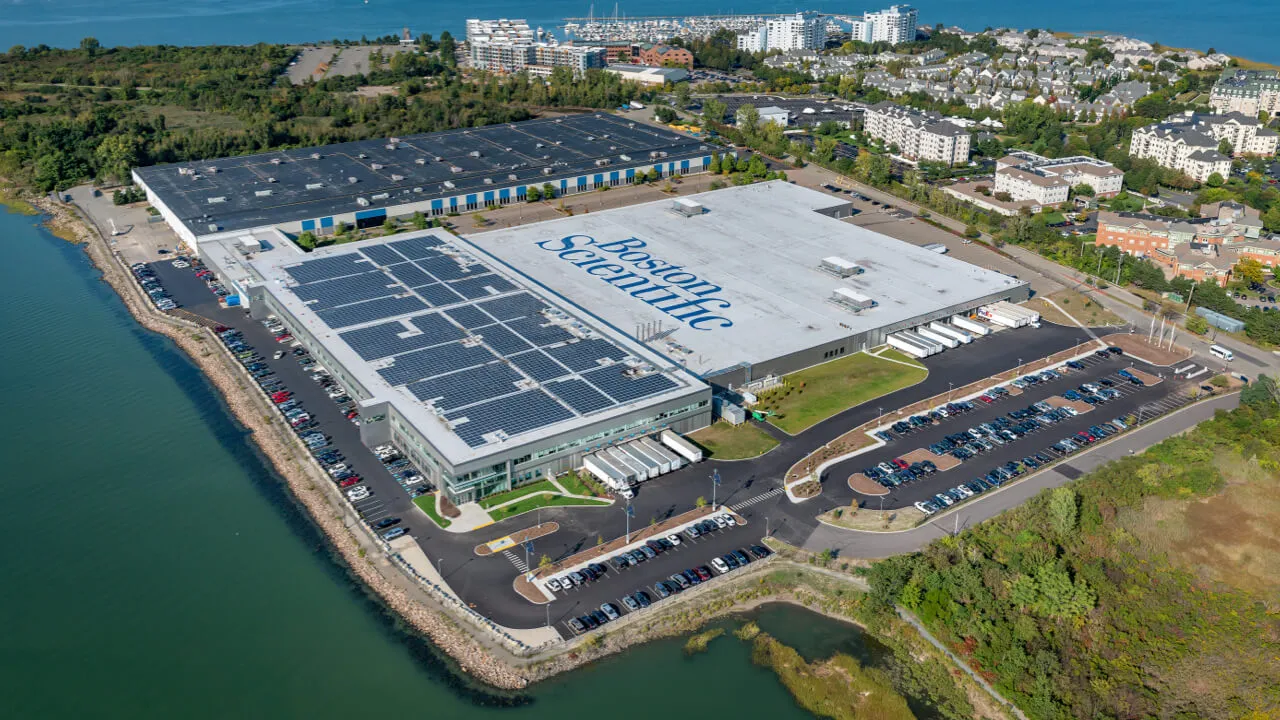The medical device industry has plenty to feel good about after what was an eventful — and in many ways successful — 2024.
The industry saw the emergence of an exciting new technology in pulsed field ablation, a rebound of dealmaking, solid procedure volumes and a more normal economic environment, despite some challenges internationally.
Medical device companies still have several obstacles to navigate in 2025, however, such as ongoing economic challenges in China and uncertainty from the incoming Trump administration.
“There [are] still a lot of unknowns as we move into 2025,” BTIG analyst Ryan Zimmerman said in an interview. “But right now … I would tell you that procedure demand is healthy; that medtech sector fundamentals going into the year are stable; consumer sentiment is good; unemployment’s low. Generally, a pretty good situation on the ground.”
MedTech Dive spoke with several experts about the most notable topics and trends to focus on this year. Here are the top medtech trends to watch in 2025:
1. Intuitive versus the field
Intuitive Surgical’s da Vinci 5 robot was one of last year’s biggest new products. Despite a limited launch, placements for Intuitive’s soft tissue surgical robot surpassed Wall Street’s expectations, adding more complexity to a question that has been hanging over the space for years: Can competitors catch Intuitive?
“If you look at the early [da Vinci 5] demand … it’s phenomenal,” Zimmerman said. “To put it mildly.”
While Intuitive maintains a nearly two-decade dominance in the soft tissue space, there are now more competitors than ever for the company to fend off. Zimmerman said only a handful of companies attended the Society of Robotic Surgery’s annual meeting five to 10 years ago; last year, more than 50 different robots were present, with another 50 or more not in attendance.
Adoption among surgeons and in new procedure categories is also helping fuel the growing market.
“Over time, everything that can possibly be done with robotics will be done,” said Shagun Singh, an RBC Capital Markets analyst. “There is just such a huge appetite, and this is still a single-digit penetrated market.”
It may take time for smaller competitors to take meaningful market share from Intuitive. Systems from larger companies like Johnson & Johnson and Medtronic are not on the U.S. market, setting up yet another year where Intuitive’s performance is the largest factor to watch.
Intuitive’s expectations for 2025 are unknown as the company does not forecast system placements. Singh said the company should transition into a full launch of da Vinci 5 later this year, boosting what has already been an attention-grabbing release.
As new competitors mature, and more enter the market, there may be room for success amid Intuitive’s dominance. Zimmerman said different systems now cover a spectrum of procedures, not just soft tissue, in hard tissue and in ophthalmology and cardiac applications. He added that the environment is not a zero-sum game, “where it was either you’re winning against intuitive or you’re losing against intuitive.”
Intuitive’s lead will likely remain despite a growing field of rivals. Singh said that even J&J, a large company with plenty of resources and a strong presence in the surgery space, may struggle to meaningfully challenge Intuitive.
“I’ve covered Intuitive for 20 years,” Singh said. “I don’t worry about competition.”
2. Medtech spending remains strong
Medtech companies had a busy year of dealmaking last year, and that momentum has already continued. Stryker announced this week that it would acquire Inari Medical for nearly $5 billion, and Boston Scientific, one of last year’s biggest spenders, said it would buy out the remaining shares of Bolt Medical for up to $664 million.
The industry could see another year filled with M&A after the number of transactions in 2024 rebounded from the lows of the previous two years. Zimmerman said last year’s increase is partly due to declining valuations, which could also spark more spending this year.
“If rates continue to go lower, the cost of debt goes down and valuations are reasonable, that’s a good recipe for M&A,” Zimmerman added.

After a busy year of dealmaking in 2024, Truist Securities analysts said Boston Scientific could be a top spender in 2025.
Courtesy of Boston Scientific
John Babitt, a partner at EY, said there could be some deals in robotics this year as the space has a lot of room to grow and several niche treatment areas are getting backing from venture capital. Babitt also called out structural heart and PFA as sectors to watch.
Truist Securities analysts, in a December note to investors, wrote that they expect more M&A activity in 2025, including larger acquisitions, and that lower interest rates and an uptick in dealmaking could also lead to more “portfolio trimming.” The analysts added that they expect Stryker, Boston Scientific, Zimmer and Medtronic to be the most active spenders.
M&A activity could also get a boost when President-elect Donald Trump takes office later this month. Experts told MedTech Dive last year that the Trump administration could be more favorable for dealmaking, compared with the Biden administration, whose sometimes lengthy review timelines may have dissuaded companies from pursuing acquisitions.
3. Trade wars could loom
The medical device sector is bracing for how the new administration will affect their businesses in other ways. There has been uncertainty hanging over device companies ever since Trump won re-election in November and began nominating unconventional picks to fill out the federal government’s top healthcare jobs.
An important question is whether changes from the Trump administration will trickle down to the medical device industry, as some of the top issues in the sector are not as high profile as those facing the pharmaceutical industry or providers. That doesn’t mean there will be no effect, or uncertainty itself does not force companies to adapt.
Tariffs, and the potential for trade wars, are key issues that could directly affect medtech companies. Trump has already threatened to increase tariffs on China and implement tariffs on Mexico and Canada.
“We’re very concerned about trade wars and geopolitics,” Zimmerman said, adding that China-exposed companies would be a big focus this year.
Zimmerman said a potential trade war with China would be coupled with slowing economic growth in the country. “[China] has been a growth engine for a lot of medtech companies for a long time,” he said.
Companies like GE Healthcare, Intuitive and Staar Surgical are more exposed to economic problems in China, according to Zimmerman. He said trade challenges with Canada and Mexico, where many device companies have facilities, could also affect the industry.

U.S. President-elect Donald Trump speaks to members of the media during a press conference at the Mar-a-Lago Club on January 7, 2025, in Palm Beach, Florida.
Scott Olson/Getty Images via Getty Images
Turnover in the White House could also lead to longer product approval timelines because of staffing shortages at the Food and Drug Administration, which was a problem during the first Trump administration, Zimmerman said. FDA employees may leave because Robert F. Kennedy Jr. and Martin Makary, who have been selected to lead the Department of Health and Human Services and the FDA, respectively, are too different from previous leadership.
In a recent interview with Stat News, exiting FDA Commissioner Robert Califf cautioned about “an increase in early retirements and loss of good people” at the agency.
“That’s something we’re watching closely,” Zimmerman said.
4. PFA success story continues
New pulsed field ablation (PFA) products soaked up a lot of attention and praise last year. The technology has sparked a fierce race among the industry’s largest companies to launch products and steal market share.
PFA is a new treatment for irregular heartbeats that is upending traditional methods and making companies plenty of money along the way. PFA treats atrial fibrillation by targeting heart tissue with nonthermal electrical energy, compared with the heat used in radiofrequency ablation (RFA) and the extreme cold of cryoablation.
Medtronic and Boston Scientific were the first two firms to release PFA devices, followed by an approval for J&J, a second approval for Medtronic and authorization for Boston Scientific’s mapping technology. Along with product rollouts, companies released data for PFA technologies at conferences throughout last year, including the annual TCT meeting.
“Every data reveal was covered with lights, cameras and action,” said Babitt, who noted that PFA would be “one of the more exciting” medtech areas to watch.
Medtronic and Boston Scientific have reported strong adoption rates by physicians, and a recent survey of electrophysiologists conducted by Citi Research found that PFA volumes would overtake RFA this year.
“I’ve covered Intuitive for 20 years. I don’t worry about competition.”

Shagun Singh
Analyst, RBC Capital Markets
Singh noted that 2024 was just PFA’s first year, and the market will remain a big growth driver. She added that RBC will watch the change in market share this year, but PFA is not a “share-shift” story.
“This is not a mature market, where you are thinking about one guy loses and the other guy gains. This is a highly under-penetrated market,” Singh said. “I would really encourage investors to think about how everybody is winning in this space.”
Boston Scientific could see another successful year for its Farapulse PFA system. Singh called Farapulse “absolutely the product of choice.” The company is also likely to see a boost from J&J’s decision to pause the U.S. rollout of its Varipulse system due to safety concerns.
5. The year of RDN?
Multiple experts highlighted renal denervation as a topic to watch in 2025. Renal denervation is a new treatment for patients with hypertension who don’t respond well to medications and lifestyle changes. The procedure reduces activity in renal nerves in the kidneys to help lower blood pressure.
Medtronic and Recor Medical, a small subsidiary of Otsuka Medical Devices, are the only companies with FDA-approved devices on the market. There were some questions about whether the devices would gain insurance coverage as FDA advisory panels reviewed the benefits versus risks of both devices, ultimately voting in favor of Recor’s product but not Medtronic’s.
However, the Centers for Medicare and Medicaid Services granted both devices transitional pass-through payment coverage late last year, opening the door for what Medtronic has tipped as more than a $1 billion market.
“This could really be medtech’s GLP-1 moment,” Babitt said. “You’re addressing a very large space in hypertension with a curative — arguably curative — solution. As this market develops, it’s going to be a really interesting story to see it unfold.”
While Babitt does not believe renal denervation will be the PFA of 2025, he said the market is poised for growth now that reimbursement is in place and eventually could become even larger than PFA.
Singh agreed, saying that while a PFA-esque year may not occur, the longer-term opportunity is “massive,” with the potential to become a multibillion-dollar market.

